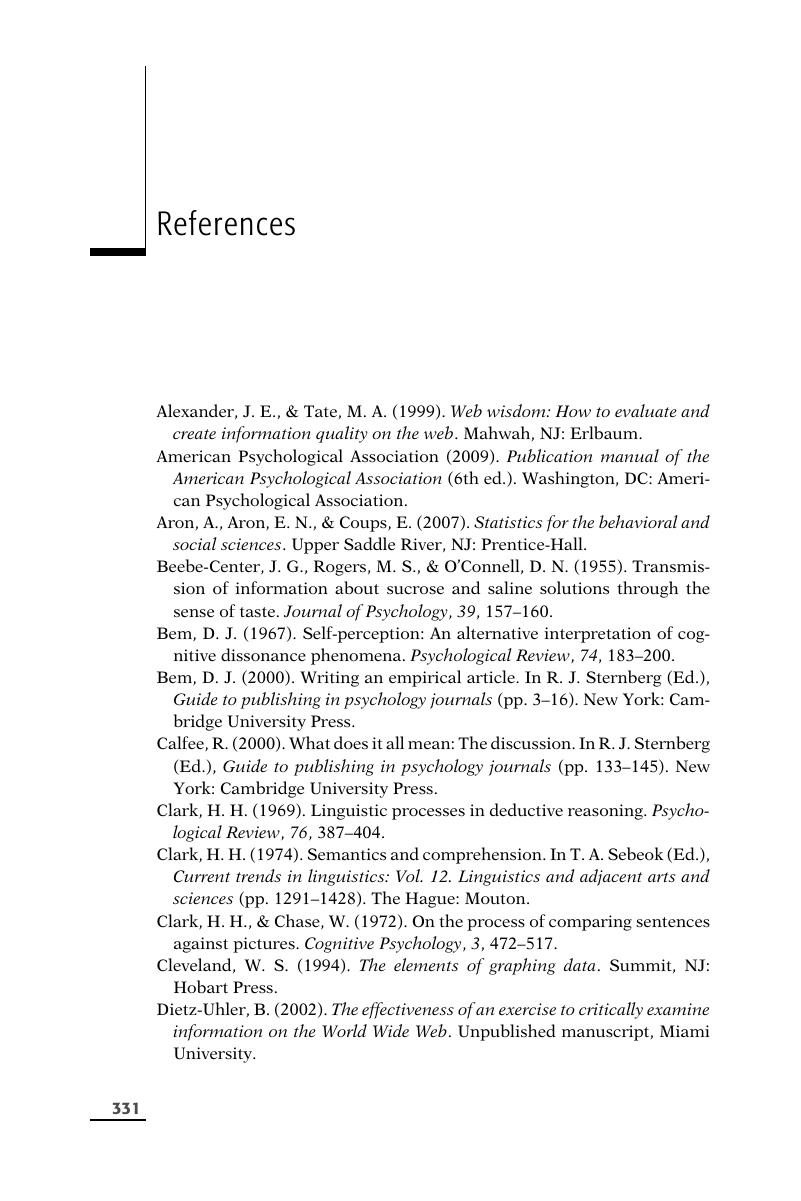Book contents
- Frontmatter
- Contents
- Acknowledgments
- Preface
- Introduction
- 1 Eight Common Misconceptions About Psychology Papers
- 2 How to Generate, Evaluate, and Sell Your Ideas for Research and Papers
- 3 Literature Research
- 4 Writing a Literature Review
- 5 Planning and Writing the Experimental Research Paper
- 6 A Word About Content, Language, and Style
- 7 Commonly Misused Words
- 8 American Psychological Association Guidelines for Psychology Papers
- 9 Guidelines for Data Presentation
- 10 What Makes a Good Paper Great? Standards for Evaluating Psychology Papers
- 11 Ethics in Research and Writing
- 12 Submitting a Paper to a Journal
- 13 How to Make Your Paper Even Better: Proofreading, Revising, and Editing
- 14 Writing a Grant or Contract Proposal
- 15 How to Find a Book Publisher
- 16 Writing a Lecture
- 17 Article Writing 101
- References
- Appendix: Sample Psychology Paper
- Index
- References
References
Published online by Cambridge University Press: 05 June 2012
- Frontmatter
- Contents
- Acknowledgments
- Preface
- Introduction
- 1 Eight Common Misconceptions About Psychology Papers
- 2 How to Generate, Evaluate, and Sell Your Ideas for Research and Papers
- 3 Literature Research
- 4 Writing a Literature Review
- 5 Planning and Writing the Experimental Research Paper
- 6 A Word About Content, Language, and Style
- 7 Commonly Misused Words
- 8 American Psychological Association Guidelines for Psychology Papers
- 9 Guidelines for Data Presentation
- 10 What Makes a Good Paper Great? Standards for Evaluating Psychology Papers
- 11 Ethics in Research and Writing
- 12 Submitting a Paper to a Journal
- 13 How to Make Your Paper Even Better: Proofreading, Revising, and Editing
- 14 Writing a Grant or Contract Proposal
- 15 How to Find a Book Publisher
- 16 Writing a Lecture
- 17 Article Writing 101
- References
- Appendix: Sample Psychology Paper
- Index
- References
Summary

- Type
- Chapter
- Information
- The Psychologist's CompanionA Guide to Writing Scientific Papers for Students and Researchers, pp. 331 - 336Publisher: Cambridge University PressPrint publication year: 2010



